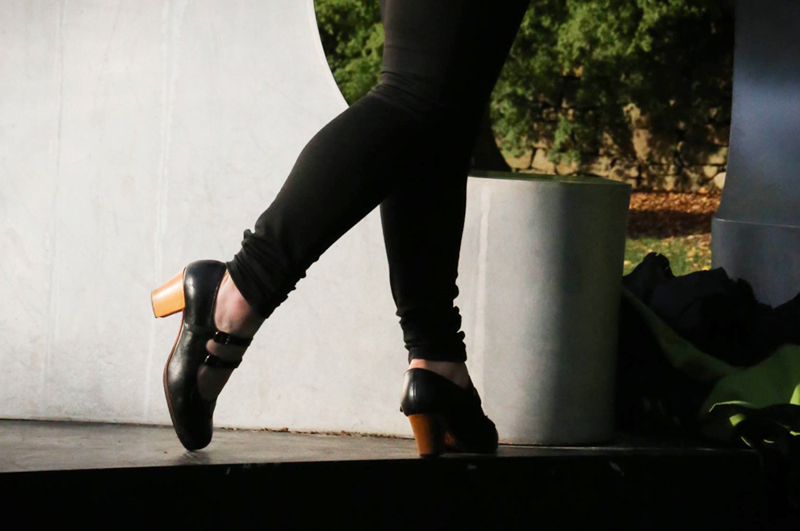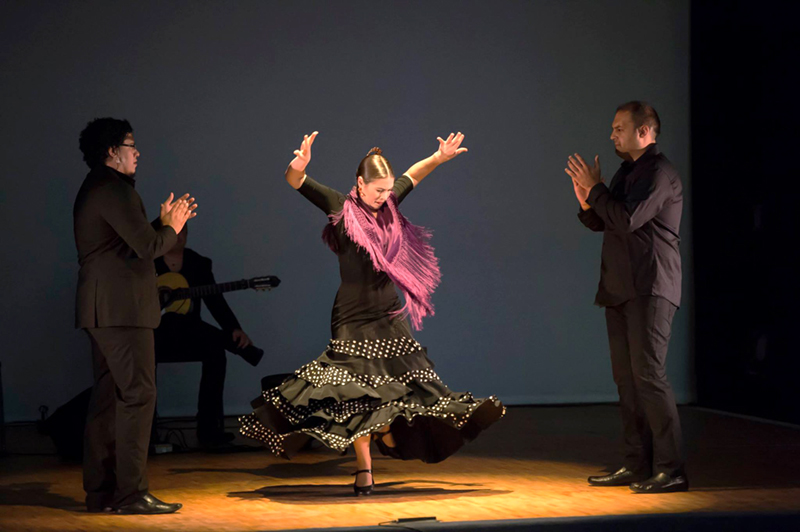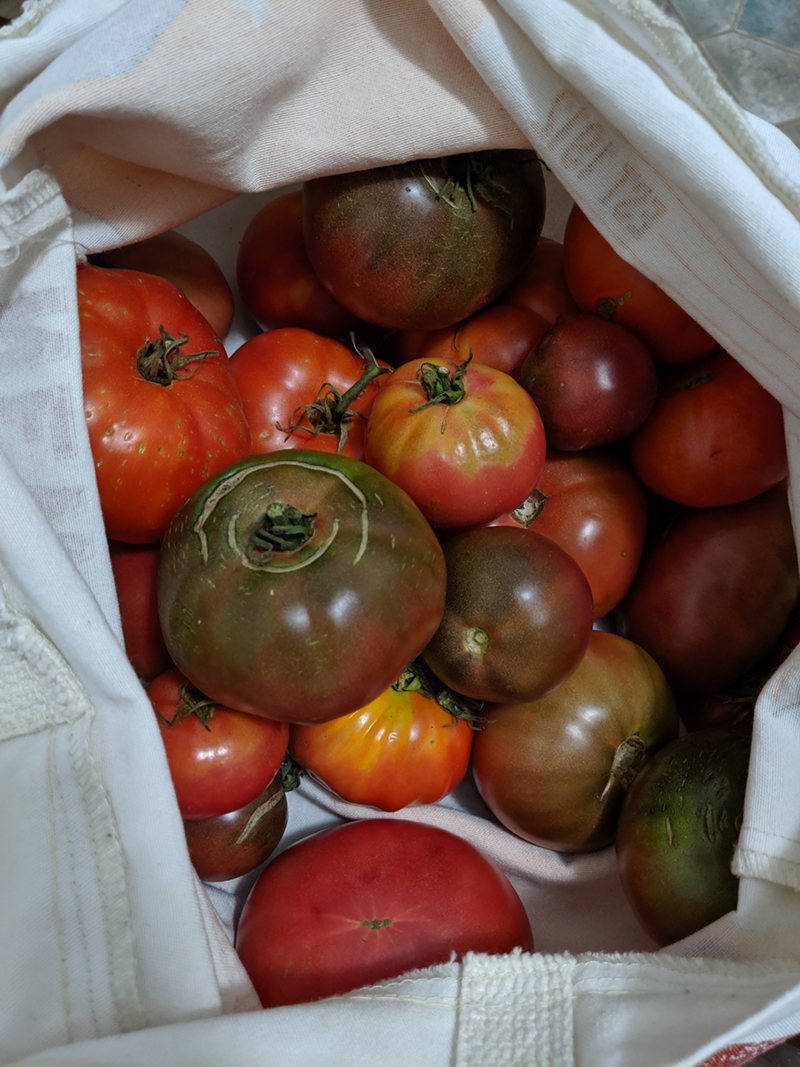The Seeds Behind “Making It”
Editorial Note: For the past seven years, Stance on Dance has asked a variety of dance artists at different points in their careers what “making it” means to them. Please join us in looking at what “making it” means as a dancer, artist and human.
BY ALICE BLUMENFELD
Have I made it? I sure hope not. “Made” implies an end, an arrival. We are bodies in motion. Always becoming. Always teetering on the edge of off-balance. And I love that.
Photo by Lisa Greenberg
Making it includes ebbs and flows of creativity, droughts and monsoon seasons. It includes searching, collecting, connecting, and then creating. And sometimes resting. A constant, on-going process of becoming. Uncertainty and perseverance are the side-effects of going wherever your curiosity takes you…
Interestingly enough, I taught a class entitled “Making it” this year at Oberlin College in the Dance department. The only parameters I’d been given were: teach some sort of professional development/career preparation class.
On the first day of class, I had the students draw a line on a sheet of paper—one continuous line, zigzags, swirls, straight, bent—however they saw fit. Each line was, of course, entirely different. And that’s the way an artist’s career is—there’s no pre-made path, no “right way” to make it. And often, we must make our own opportunities to continue moving forward. I also had the students write a one-year, five-year, 10-year and beyond dream list. That’s a practice I do myself and had actually let slip recently. What I notice in this practice: there are recurring themes, but my dreams and goals—my horizon—expands. There are always more possibilities, always more to learn and achieve, and more to dream.
So, how do you prepare eager 20-somethings for a career where rejections become second nature? I learned, in teaching that class, that “making it” is about making your own magic, forging your own path, and above all else, persevering. And, I believe you can only persevere when you’re truly letting passion lead. My approach (and surely not the only approach): make your own magic, keep an ever-expanding horizon, enjoy the unexpected, and persevere. The magic is in the work (that we’re all too often avoiding doing). There’s a bit of faith and trust too. And a dash of luck (but luck without preparedness won’t help anyone).
A composer I know, Nick Benavides, told me he keeps a rejection binder so that each rejection appears like an achievement. Yes, it’s cliché to say it, but each rejection brings you closer to an acceptance. And often, in applying for grants and jobs, I clarify my projects and visions in the application. Nothing is a waste of time if you learn from it. So, I have a rejections folder on my computer—I screen shot every rejection email and keep it in the rejections folder, smack in the middle of my desktop.
Artistically, financially, and personally I have learned to never keep all my eggs in one basket. Artistically, in that teaching and researching feed my performance, performing feeds teaching and research, research feeds teaching and performance, and my personal life feeds all of them (after all, how would I have anything to say in dance if I weren’t also a human—grieving, angry, joyful, surprised, loved and loving, afraid, and everything else that goes along with this experience we call life). To keep up and push my interests (in dance and writing), some of the side pursuits becoming more central—each feeding the other. From yoga to contemporary dance, from sewing to writing about dance—things I did as separate outlets have become their own offshoots, integral to my dance practice in their own way, a complicated root system between plants constantly making new connections and communicating.
The other day, making jam, I had a revelation about how sound carries memory and knowledge. Stirring the boiling pot of berries and sugar, I knew the syrupy concoction had reached the proper temperature because I remembered that sound from my childhood, making jam with my mother. Maybe that will be the starting point for a new choreography…
Photo courtesy the National YoungArts Foundation
When asked what makes a good dancer, the master replied:
First to be a good dancer, one must know the music as well as the dance.
And what else?
To be a better dancer, one must understand the stories and be able to interpret the characters being portrayed.
Is there more?
The best dancer is the one who has all those things I have told you about and is a farmer.
—Javanese proverb
I could take that quote literally—forget dance and go farm. (In fact, I am growing vegetables for the first time in my life and recently came across agrarian Wendell Berry’s writings). But I read the quote more metaphorically—what growing plants from seedlings has taught me this year: the magic behind a ripe tomato comes from tireless labor and unending transformations.
At first, nothing seemed to be happening when I planted the seeds. I kept watering, and there was just dirt. Would the seeds sprout? Did I give them too much water? Too little? Some days I forgot to water. I talked to the dirt, hoping the seedlings could hear my voice. I trusted and kept going. And then one day, the tiniest little greenish-white stems were poking up from the soil. They’d arrived! I did it!
That was of course just the beginning. Then I had to prepare a garden plot, waiting until any chance of frost was gone. And having a gardening partner helps—i.e. collaborators who are as invested in the process as you. I had no idea how to rototill the land or make rows. Then I planted the seedlings. Then, just after they had been planted outside—there were floods in Ohio, and I was out of town. Would they make it? Would the water drown them, rot their roots? Whatever would be would be, and I trusted that at least some would survive. I came back, and the plants were stronger and taller yet.
And now the weeding begins. I have pulled more weeds in the last three weekends than in the rest of my life. To me, weeding is meditative; you have to pull just right, not too hard and not too soft, a supple strength. And it is also like simplifying. If there’s too much excess, it distracts from the objective.
Now I need to get those tomato stakes to help the plants as they begin to form tomato buds—strong scaffolding to eventually support their fruits. It’s a process, and most of the growth is slow and unnoticeable. But the connection to the land, the patience, the understanding of the basic biological underpinnings… That’s making it. To not be in a rush to produce, to not industrialize or lose the connection to the labor, but to slowly deepen one’s understanding and see the connections.
Most of the labor is unseen—in fact, we almost forget about all that goes into making a tomato when we buy a bunch at the grocery store. Not just the farmer’s work—but the transformation from soil and sunlight to greens and fruit. Making dancing is the same—much of the magic goes unnoticed, hidden from the public’s view.
And, I will add that sharing is part of this process as well—I *should* have more tomatoes than I know what to do with. The above Japanese proverb was shared with me, and like being given a seed, I didn’t just take the quote, but had to plant it, think on it, apply it, do the work myself for it to become something to me, for it to transform into meaning. (Thank you, Wendy Clinard, for sharing the quote!)
I could give you the details of my career, all the twists and turns, injuries, disappointments, achievements, successes, etc., but the underlying intention drives a career. Curiosity and passion make a great motor. Making it to me signifies forward motion and growth. A sustainably and ever-expanding horizon, seasons that transform and continue evolving.
~~
Alice Blumenfeld is the founder and artistic director of ABREPASO Flamenco and a visiting assistant professor of dance at Oberlin College. She holds an MFA in dance from Hollins University and a BA in comparative literature from New York University. In 2012, Alice received a Fulbright Grant for flamenco choreographic studies in Spain. As a freelance dancer, she has worked with many of the major flamenco companies in the US, and her choreography has been commissioned by many institutions, including the Kennedy Center for Performing Arts, the National Hispanic Cultural Center, YoungArts and several universities.
To learn more about Alice and her work, visit aliceblumenfeld.com.



